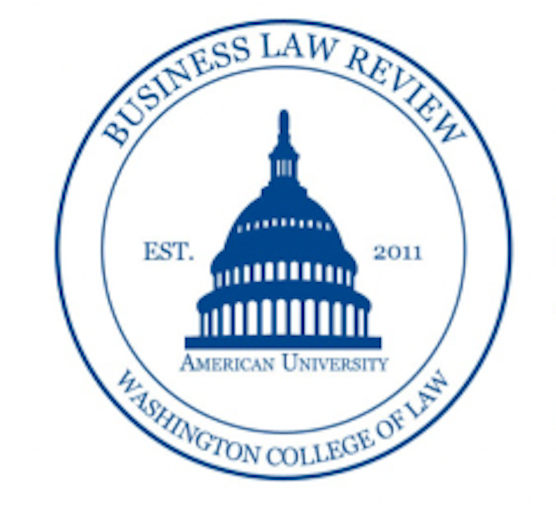
By: Cyrus Mostaghim
DISCLAIMER: While the author is an employee of the Consumer Financial Protection Bureau (“CFPB”), this article’s contents reflect the author’s thoughts as a private citizen, not as an employee or representative of the CFPB. The author wrote this article using only publicly available information and without the use of any CFPB resources. The article’s contents should not be interpreted to be associated with the CFPB in any manner or construed in any way to be a representation or statement from the CFPB.
On June 15, 2020, the U.S. Supreme Court announced that discrimination based on sexual orientation or gender identity are forms of sex discrimination under Title VII.[1] While the landmark case of Bostock v. Clayton County, Georgia[2] enshrines protections for the LGBTQ+ community against employment discrimination, the logic that the Court employed in the decision has far-reaching ripple effects outside of employment discrimination.[3] Since the Bostock decision, courts have cited the ruling as persuasive in areas outside of employment discrimination that protections based on sex should encompass sexual orientation and gender identity.[4] The Center for American Progress published an article that provides a high-level discussion of the implications of Bostock on the future of LGBTQ+ civil rights.[5] However, one area that the article does not discuss is financial regulation.[6] Additionally, the article asserts that due to the Trump administration’s history, it is unlikely that there will be an active extension of the interpretation of sex discrimination in Bostock without litigating the issue for each statute or passing the Equality Act.[7]
One year ago, Congress began to investigate the LGBTQ+ community’s lack of protection from discrimination in financial services. [8] Before the Congressional hearing, there were two academic studies that used Home Mortgage Disclosure Act (HMDA) data, a vital data source that enables federal regulators and the general public to identify potential discrimination in mortgage financing, to identify potential discriminatory practices against the LGBTQ+ community.[9] In June of 2020, the National Community Reinvestment Coalition (NCRC) released a report that used HMDA data to identify the same potential issue and published an article, two months later, that summarized the report’s findings.[10] However, the issue with all three studies is that they are academic in nature because sexual orientation and gender identity are not required HMDA data points.[11] Thus, because the studies had to create a methodology to infer sexual orientation, their findings are sufficient for academic purposes, but not for a legal claim.[12] To have a concrete finding requires data that reflects the actual sexual orientation or gender identity of the consumers.[13] Thus, the importance of Bostock.[14]
Recently, the Consumer Financial Protection Bureau (CFPB) issued a Request for Information (RFI) regarding Bostock and feedback on if the Equal Credit Opportunity Act’s (ECOA) prohibition on sex discrimination should also cover sexual orientation and gender identity.[15] Before the Bostock decision, the CFPB gave an informal opinion, colloquially known as the SAGE letter, under the leadership of Director Cordray. [16] The letter stated that the existing case law supported an interpretation that sexual orientation and gender identity could receive protection under ECOA’s prohibition against discrimination based on sex.[17] However, that guidance was not binding, making the recent RFI the Bureau’s first formal action on the topic.[18] CFPB’s RFI under Director Kraninger indicates that there is a chance that protection could start under the Trump administration.[19] Instead of waiting for a case that enables extending the interpretation via litigation, the extension could happen via the formal rulemaking process.[20]
The effect of applying the interpretation that discrimination based on sexual orientation or gender identity is a form of sex discrimination from Bostock to the financial regulation statutes will not be limited to just ECOA. CFPB will likely add requirements to regulations for other financial regulation statutes to empower the Bureau to identify actual discrimination based on sexual orientation or gender identity so that it can bring enforcement actions under ECOA. One possibility of new regulations to identify discrimination in mortgage loans would be to designate sexual orientation and gender identity as data points an institution must ask a consumer to disclose voluntarily but are mandatory HMDA data points for financial institutions in their HMDA reports.[21]
The same course of action could be applied to all applications of credit and the associated compliance requirements for data collection, compliance, and examination of financial institutions. Additionally, there are implications from creating new required data points that impact the FinTech industry. Already, concerns exist regarding FinTech’s AIs and the direct discrimination or proxy discrimination against minority groups, and the same concerns would apply to the LGBTQ+ community.[22] Especially since it would be difficult to identify discrimination against the community in the data used to train the AI algorithms.[23]
The extension of the definition of sex discrimination in Bostock to financial regulations would introduce a new areas of legal liability for financial institutions.[24] The first, and obvious, area includes repercussions from discriminatory actions that result in regulatory enforcement action in addition to a civil suit when allowed by statue. Assuming the cost of regulation is justified, the second cost will be via the changes that all financial institutions will have to make to their operations, procedures, and infrastructure to ensure compliance with the new requirements.[25] A modest increase in operating costs to comply with reasonable requirements that identify and prevent discrimination against any minatory group and ensure equality is always justified.
[1] Tim Fitzimons, Supreme Court Sent ‘Clear Message’ with LGBTQ Ruling, Plaintiff Gerald Bostock Says, NBC News (Jun. 16, 2020), https://www.nbcnews.com/feature/nbc-out/supreme-court-sent-clear-message-lgbtq-ruling-plaintiff-gerald-bostock-n1231190.
[2] 140 S. Ct. 1731 (2020)
[3] See Sharita Gruberg, Beyond Bostock: The future of LGBTQ Civil Rights, Ctr. for Am. Progress, https://www.americanprogress.org/issues/lgbtq-rights/reports/2020/08/26/489772/beyond-bostock-future-lgbtq-civil-rights/ (postulating the application and impact of Bostock in employment, education, health care, and housing); Katie Keith, Another Court Vacates LGBTQ-Specific Rollbacks from New 1557 Rule, Health Affairs (Sept. 4, 2020), https://www.healthaffairs.org/do/10.1377/hblog20200904.528322/full/ (discussing impact of Bostock on HHS rule to roll back healthcare protections for the LGBTQ+ community).
[4] Bostock, 140 S. Ct. 1731. See Keith, supra note 3.
[5] See Gruberg, supra note 3.
[6] See id.
[7] Bostock, 140 S. Ct. 1731; The Equality Act, H.R. 5, 116th Cong. (2019) (amending the Civil Rights Act of 1964 to include sexual orientation and gender identity). See Gruberg, supra note 3 (stating extension of Bostock unlikely without litigation or passing the Equality Act).
[8] See generally Cyrus Mostaghim, “The True Colors of Financial Services and LGBTQ+ Discrimination”, Am. U. Bus. L. Rev.: The BLR Buzz Blog (Nov. 16, 2019), https://aublr.org/aublr/2019/11/the-true-colors-of-financial-services-and-lgbtq-discrimination/ (serving as author’s initial exploration this topic and providing additional background information).
[9] Home Mortgage and Disclosure Act (HMDA) of 1975, 12 U.S.C. §§ 2801–2810; J. Shahar Dillbary & Griffin Edwards, An Empirical Analysis of Sexual Orientation Discrimination, 86 U. Chi. L. Rev. 1, 4 (2019) (using 2010-2015 HMDA data to identify trends in discriminatory lending against LGBTQ+ community); Leonard J. Kennedy, Patricia A. McCoy & Ethan Bernstein, The Consumer Financial Protection Bureau: Financial Regulation for the Twenty-First Century, 97 Cornell L. Rev. 1141, 1149 (explaining HMDA). See also Patricia McCoy, Inside Job: The Assault on the Structure of the Consumer Financial Protection Bureau, 103 Minn. L. Rev. 2543, 2581–82 (discussing HMDA data set importance and arbitrage of new data point regulation); Hua Sun & Lei Gao, Lending Practices to Same-Sex Borrowers, 116 PNAS 9293, 9293 (2019) (identifying trends indicating potential discriminatory practices against LGBTQ+ community for mortgages), https://www.pnas.org/content/116/19/9293.
[10] Jason Richardson & Karen Kali, Same-Sex Couples and Mortgage Lending, (2020) (finding indicators of discrimination against same-sex couples), https://ncrc.org/same-sex-couples-and-mortgage-lending/ (last accessed Sept. 19, 2020); Annelise Lederer & Jake Lilien, Lending Discrimination Faced by Same-Sex Couples in the Mortgage Arena, Nat’l Cmty. Reinvestment Coal. (NCRC) (Aug. 19, 2020) (discussing findings from NCRC report by Richardson and Kali), https://ncrc.org/lending-discrimination-faced-by-same-sex-couples-in-the-mortgage-arena/.
[11] See Bureau of Consumer Financial Protection, Reportable HMDA Data: A Regulatory and Reporting Overview Reference Chart for HMDA Data Collected in 2019 38 (2019), https://files.consumerfinance.gov/f/documents/cfpb_reportable-hmda-data_regulatory-and-reporting-overview-reference-chart-2019.pdf [hereinafter “HMDA Data List”] (listing and defining current HMDA data points); Richardson & Kali, supra note 10 (stating no way to identify same-sex couples using HMDA data); Sun & Gao, supra note 9 (stating no requirement to disclose sexual orientation).
[12] See Richardson & Kali, supra note 10 (providing the study’s methodology); Dillbary & Edwards¸ supra note 9 at 4–5 (discussing how HMDA allowed analysis based on perceived LGBQ+ couples); Sun & Gao, supra note 9(overestimating by assuming all same-sex applicants are LGBTQ+).
[13] Id.
[14] Bostock v. Clayton Cty., Ga., 140 S. Ct. 1731 (2020)
[15] Equal Credit Opportunity Act (ECOA), 15 U.S.C. § 1691; Bureau of Consumer Financial Protection, Docket No. CFPB-2020-0026, Request for Information on the Equal Credit Opportunity Act and Regulation B 9–10, https://files.consumerfinance.gov/f/documents/cfpb_rfi_equal-credit-opportunity-act-regulation-b.pdf [hereinafter “CFPB RFI”]; at 1148 (providing ECOA’s purpose).
[16] Services & Advocacy for GLBT Elders (SAGE) (Aug. 30, 2016) (stating CFPB believed case law could support a finding that ECOA covered sexual orientation and gender identity as sex discrimination prior to the Bostock decision by citing EEOC’s Title VII interpretation), https://www.cfpbmonitor.com/wp-content/uploads/sites/5/2016/09/SAGE-Letter.pdf [hereinafter “CFPB SAGE Letter”].
[17] Id.
[18] See CFPB RFI, supra note 15; CFPB SAGE Letter, supra note 16.
[19] See CFPB RFI, supra note 15.
[20] Id.
[21] See CFPB HMDA Data List, supra note 11;Richardson & Kali, supra note 10 (providing the study’s methodology); Dillbary & Edwards¸ supra note 9 at 4–5 (discussing how HMDA allowed analysis based on perceived LGBQ+ couples); Sun & Gao, supra note 9 (overestimating by assuming all same-sex applicants are LGBTQ+).
[22] Jack M. Balkin, 2016 Sidley Austin Distinguished Lecture on Big Data Law and Policy: The Three Laws of Robotics in the Age of Big Data, 78 Ohio St. L.J. 1217, 1239 (2017) (expressing concerns about AI and its impact on society);Anya Prince & Daniel Schwartz, Proxy Discrimination in the Age of Artificial Intelligence, 105 Iowa L. Rev. (forthcoming 2020) (manuscript at 12, 18–19, 29), https://papers.ssrn.com/sol3/papers.cfm?abstract_id=3347959 (defining proxy discrimination as when discrimination against a protected class happens based on factors that are not protected statuses, and providing AI’s history, evolution, general business impact, and risks). See generally Cyrus Mostaghim, “The Danger of Proxy Discrimination in FinTech and the Need for Regulatory Sandboxes”, Am. U. Bus. L. Rev.: The BLR Buzz Blog (Apr. 1, 2020), https://aublr.org/aublr/2020/04/the-danger-of-proxy-discrimination-in-fintech-and-the-need-for-regulatory-sandboxes/ (providing author’s thoughts on proxy discrimination in FinTech); Cyrus Mostaghim, Paving the Yellow Brick Road for Battling Discrimination Against the LGBTQ+ Community’s Rainbow of Credit in Financial Services (Apr. 26, 2020) (unpublished comment) (on file with the American University Business Law Review) (discussing author’s argument about the need for a statutory requirement to prohibit discrimination against the LGBTQ+ community in financial services and proxy discrimination in FinTech, and exploring the potential impacts in the supervision and enforcement of financial institutions).
[23] Id.
[24] Bostock v. Clayton Cty., Ga., 140 S. Ct. 1731 (2020).
[25] See Hilary J. Allen, The Pathologies of Banking Business as Usual, 17 Pa. J. Bus. L. 861, 863–64 (2015) (stating criminal law and private litigation not effective to address financial industry’s negative behavior); Hilary J. Allen, A New Philosophy for Financial Stability Regulation, 45 Loy. U. Chi. L. J. 173, 185, 190–91 (2013) (discussing cost impact of financial regulation and how cost-benefit analysis is sometimes used to determine value of regulation) [hereinafter “Allen FS Philosophy”].


